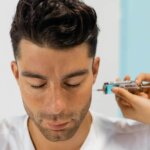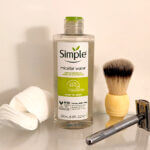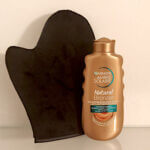
Building a men’s facial care routine goes beyond mere skincare. We also have a beard—shaven or not. And our scalp may be part of our face if we’re bald. But it doesn’t have to be complicated.
It must, however, be tailored to your facial needs. And it must feel intentional and not as though you’re just rushing through the motions.
Here’s how to find the right facial care products and, just as importantly, how to build a routine that works with your schedule rather than against it.
This isn’t about adding time—it’s about using the time you already spend on your face differently. Swap the soap for a skin-balanced cleanser. Shave with a product that protects, not strips. Same minutes, better results.
So, Why Are You Here?
- Your skin used to be fine—and now it’s feeling dry, tight, or just off.
- You’ve always had breakouts—and you’re still trying to get them under control.
- You want to age well—but you’re not sure of what actually works.
- You’ve got an important event coming up—a wedding, a first date, a job interview—where you want to look sharp, not shellacked.
Wherever you’re starting from, this guide keeps it simple. No jargon. No innumerable steps. Just a routine that works with your life and your skin—not something you have to be a slave to.
Why Facial Care Is Important
Skin changes according to environment, lifestyle shifts, and age.
As a teen, I never had full-blown acne, but there was always a spot or two. The challenge was to use one of the many available remedies without parching my face.
Nowadays I’m prone to dryness, whether it’s caused by cold and central heating in winter or through sun, sea, and wind on vacation. You won’t avoid such situations, but you can find ways that allow the skin to cope.
And why believe that only women should concern themselves with aging well?
It’s true that you can’t prevent your skin from thinning and losing natural hydration. Or halt the gray in your beard or mustache. But you don’t have to let it spoil the way the world perceives you.
Think of actors like Sean Connery, Daniel Craig, Charles Bronson, and Jason Statham. In their movies, they appear more rugged as they get older, but never neglected. These men know what a jar of moisturizer is for—and it doesn’t make them any less masculine.
Building a Viable Facial Care Routine
My younger self would invariably oversleep and arrive at work unwashed and unshaven. When I did learn to get out of bed in the morning, bathroom time was cut as short as possible—and even more so when I discovered that I looked better without hair than with.
As for the nighttime, to this day, I like to enjoy my evenings, which leaves no room for a 12-step Korean skincare routine. If that’s your thing, great. But for most men, it isn’t. Maybe we’d be disciplined enough to carry it through for a couple of days, but enthusiasm would soon wane, and all those carefully chosen products would sit there quietly expiring.
To be viable, a men’s facial care routine must be fast, easy, and effective. Results will make it stick, and consistency is key.
Know Your Skin Type
It begins with understanding your skin’s condition.
It may be obvious, but if it’s not, I’ve dedicated a full post on how to identify your skin type. This is a useful read, too, if your skin’s been acting up or seems to have changed.
All you need is a tissue and good lighting. Here’s a quick run-through.
How to Carry Out a Skin Type Test
- Start with a clean face: Wash with water and a mild cleanser, pat dry, and wait 30 minutes—don’t apply any skincare products.
- Use a Tissue: Gently press it on your forehead, nose, cheeks, and chin.
- Hold it up to the light: The oil pattern reveals your skin type.
What the Results Mean
- Normal (Eudermic): Minimal oil on the tissue. Your skin feels balanced and smooth, and rarely breaks out.
- Dry (Xerosis): Little to no oil. Your skin may feel tight, flaky, or rough.
- Oily (Seborrheic): The tissue shows significant oil, especially on the T-zone (forehead, nose, and chin). Your skin may look shiny and be prone to breakouts.
- Combination: Oily on the T-zone, but dry or normal on the cheeks.
- Sensitive: Not always revealed by oil levels—look for redness, irritation, or stinging after shaving and applying skincare products.
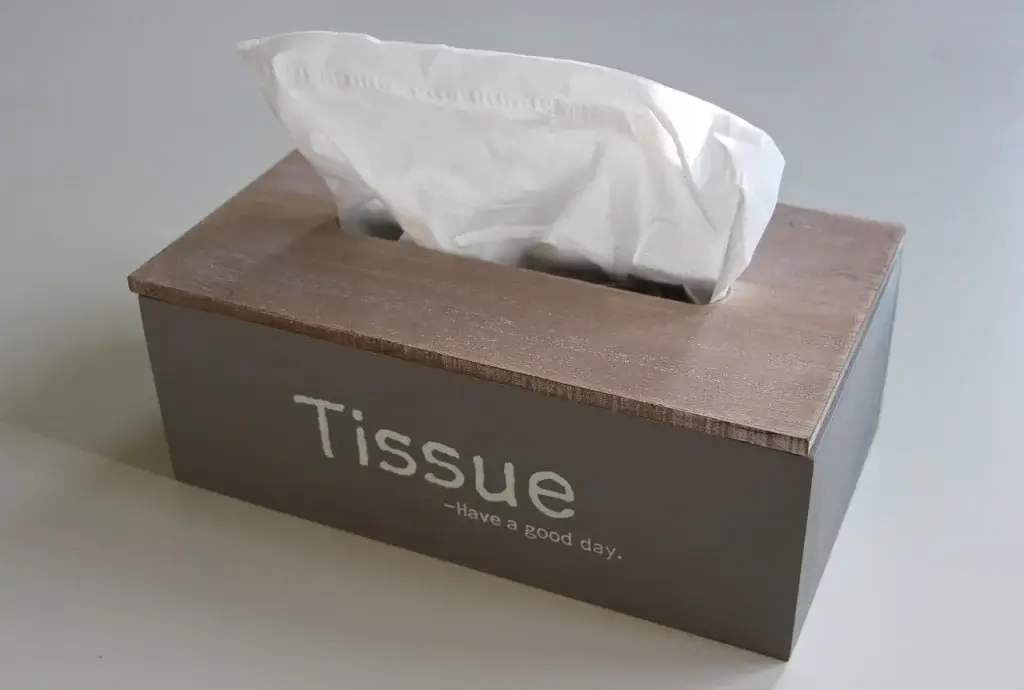
Facial Care According to Skin Condition
Because there are so many, the most complicated part of building a facial care routine is choosing the right products—we’ll take a look at that later. But there’s only one basic routine, regardless of skin type.
All you have to do on a daily basis is cleanse and moisturize. That’s it. Most faces don’t need more.
Shaving
But first, let’s take a look at shaving, which plays a huge role in men’s facial care.
Wet or Dry?
Even if it seems like the easier option, dry shaving isn’t the answer.
The constant tugging and stretching undermines elasticity, which eventually causes sagging, especially around the jaw and neck.
Wet shaving is far more therapeutic.
Personally, I do it the old-fashioned way: with a brush and safety razor.
Not only does the brush create a rich lather, it exfoliates and lifts the whiskers. And, unlike cartridges, the blades of a safety razor don’t cut below the skin, meaning no ingrown hairs and a gentler shave for the acne-prone.
To prevent breakouts, create a barrier between your skin and the lubricant with jojoba or sunflower oil—there’s no need to buy a product labeled “shaving oil.”
Men with dry and sensitive skin would be wise to do the same, and to use shaving cream rather than a soap puck or stick. Creams generally offer more moisturizing ingredients, which your skin will appreciate.
For normal skin, use whatever lubricant takes your fancy. You should, however, use a brush when shaving with a safety razor to avoid cuts and nicks.
Cleanse
In the Shower
It doesn’t matter whether you shower in the morning or at night. What does matter is the product you use.
This is when your face gets its deepest cleanse, but don’t do it with shower gel, which is formulated for the tougher skin of the body. Even if it seems harmless, you’ll be surprised at the difference if you switch to something more suitable—and it doesn’t have to be anything special.
For dry, sensitive, normal, and combination skin, a soap-free wash lotion with a pH of 5.5 is all you need. I don’t even buy Sebamed—I find my drugstore’s home brand more than adequate. Plus, it doubles as a beard shampoo. It’s gentle and won’t strip away oils.
But don’t forget that for strong, healthy growth, your facial hair should be washed only once or twice a week. Otherwise, just run over it with a boar bristle brush to remove loose cells and debris, then rinse with plain water in the shower. Apply cleanser only to hairless areas, including your scalp if you’re bald or shaved.
For oily and acne–prone skin, use a face wash with salicylic acid and zinc, but not on your facial hair. For this, use the same soap-free wash lotion as other skin types, but only a couple of times a week.
Micellar Water
Chances are, most men have never heard of micellar water. But if you’re building a facial care routine that’s supposed to stick, this is the kind of simplified product you need.
It does two basic jobs: it cleanses and tones. It’s easy to use, effective, and takes less than 30 seconds to apply. It also works as a post-shave rinse instead of aftershave.
Personally, I shave before showering to make sure my face is completely free of shaving soap and debris. But if you prefer a post-shower shave, follow up with micellar water for the same benefits.
Use it for a quick cleanse before bed—or in the morning if you shower at night.
It’s also great on the go. Look for travel-size products—they’re perfect for gym bags, carry-ons, or if you want to test it out before committing to a full bottle.
How Micellar Water Works
Now that we’ve discovered this wonder product, let’s do the manly thing and look at how it works.
Micellar water is composed of tiny cleansing molecules (micelles) suspended in water. It’s gentle, non-stripping, and no-rinse. It lifts away sweat, pollution, sunscreen, and product residue (e.g., from shaving) without disrupting the skin barrier. But it doesn’t cleanse as deeply as a face wash applied in the shower.
I consider it a godsend for nights when all I really want to do is climb into bed.
Most manufacturers have a “one for all” version, but there are multiple variants formulated to oily, acne-prone, sensitive, and dry skin types.
How to Use Micellar Water
This is so simple that it doesn’t really deserve its own heading.
Apply to a cotton pad and swipe it over your face. Repeat if you think you need more.
By cotton pad, I mean flat and lint-free.
The usually recommended cotton balls will leave your beard or stubble full of lint, as well as taking up a lot more space in the small area generally designated to men for personal care items.
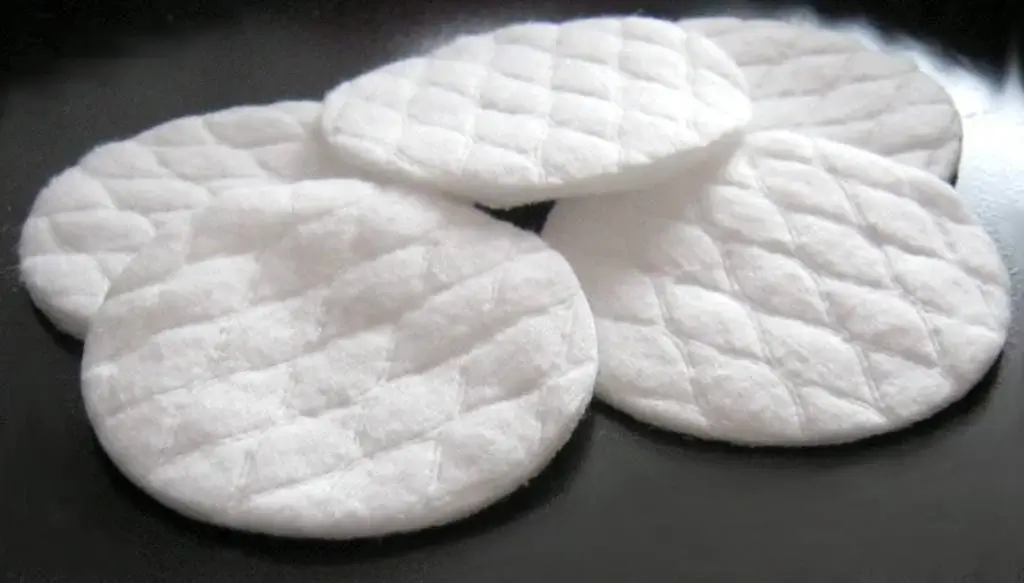
Moisturizing
There are three types of moisturizer: day cream, night cream, and 24-hour cream.
Day cream is lighter textured and often includes SPF 15. That’s usually enough for a Northwestern European climate or similar. For more intense sun exposure, you’ll need an extra sunscreen. Common sense should tell you what is appropriate.
Night cream skips the SPF (as it should) and instead concentrates on hydration and repair. That’s because nighttime is about recovery—blood flow and cell turnover increase, and damage starts to heal. A richer cream supports this process.
24-hour cream tries to do it all: one jar for morning and night. This helps to streamline your grooming supplies, simplifying your routine and saving space.
But if it contains SPF, it’s not ideal for nighttime. This is a potential irritant and may impair your skin’s ability to heal itself. So, if you’re using a separate sunscreen during the day, go for a 24-hour cream without SPF—it’s clean, versatile, and evening-friendly.
There’s a Moisturizer for Every Skin Type
It doesn’t stop there: now you need to find the right formula.
Oily or acne-prone skin: Hydration and oil are not the same thing. You need moisture that doesn’t add to the problem. Therefore, choose water-based products—light, fast-absorbing, and non-comedogenic. Look for gel creams with ingredients like hyaluronic acid or niacinamide.
For daytime, pair with a mineral sunscreen (zinc oxide or titanium dioxide). These ingredients sit on top of the skin without clogging pores. A product containing iron oxide, which adds a discreet tint, can play down blemishes and inflammation.
Dry or mature skin: You’ll want richer textures, especially at night. Ingredients like shea butter, ceramides, or squalane support the skin barrier and ease that tight, stretched feeling.
Normal skin: Wear a product labeled “normal.” It should be lighter for the daytime and richer at night.
Combination skin: This is a mixture of an oily T-zone with drier cheeks. Some men get good results from a product labeled specifically for this skin type. But others do better treating each area separately: lightweight where you shine, richer where you’re dry or flaky. Experiment to find what works best for you.
Sensitive skin: The simpler the product the better. It should be fragrance-free and preferably tested for reactive skin. Less is more when your skin’s easily irritated.
For Acne-Prone Men
You’ve never seen a breakout under your eyes—and there’s a reason for that. The skin here is thinner and has almost no oil glands. As such, it tends to dryness and lines, even if you’re still in your teens.
This is why you should never apply harsh treatments around the eyes.
Instead, build into your facial care routine a richer moisturizer for this area only. It will prevent premature wrinkling and loss of elasticity.
How to Apply Moisturizer
Again, this is so simple, it probably doesn’t deserve its own heading.
But consider gravity, which means massaging in upward and outward motions. This delays sagging, keeping the skin firmer for longer.
If your face appears too shiny after applying moisturizer, blot with a tissue.
What About Moisturizing Your Dome and Facial Hair?
You’ve moisturized your facial skin, but what about your facial hair and your shaved or balding head?
Facial Hair
Facial hair is no reason to neglect the skin beneath it.
Press the same moisturizer you apply to the rest of your face into your beard or mustache using your fingertips.
And swap fragranced beard oils for pure jojoba oil—especially if you have acne-prone or sensitive skin. It hydrates both hair and skin, absorbs cleanly, and won’t clog pores or trigger irritation.
Bald or Shaved Heads
Treat your bare dome as an extension of your face. Moisturizer here is essential, especially after shaving. Use the same formula you trust on your face, or go a little richer if your scalp feels tight or flaky.
If you’re outdoors, don’t forget SPF. Opt for broad-spectrum sunscreen, matte if you prefer a low-shine look, and reapply as needed.
Personally, I like my MPB dome to shine, so I smear jojoba oil over my moisturizer each morning.
In case you’re shaved, treat your scalp to an exfoliating scrub once a week, which prevents ingrown hairs.
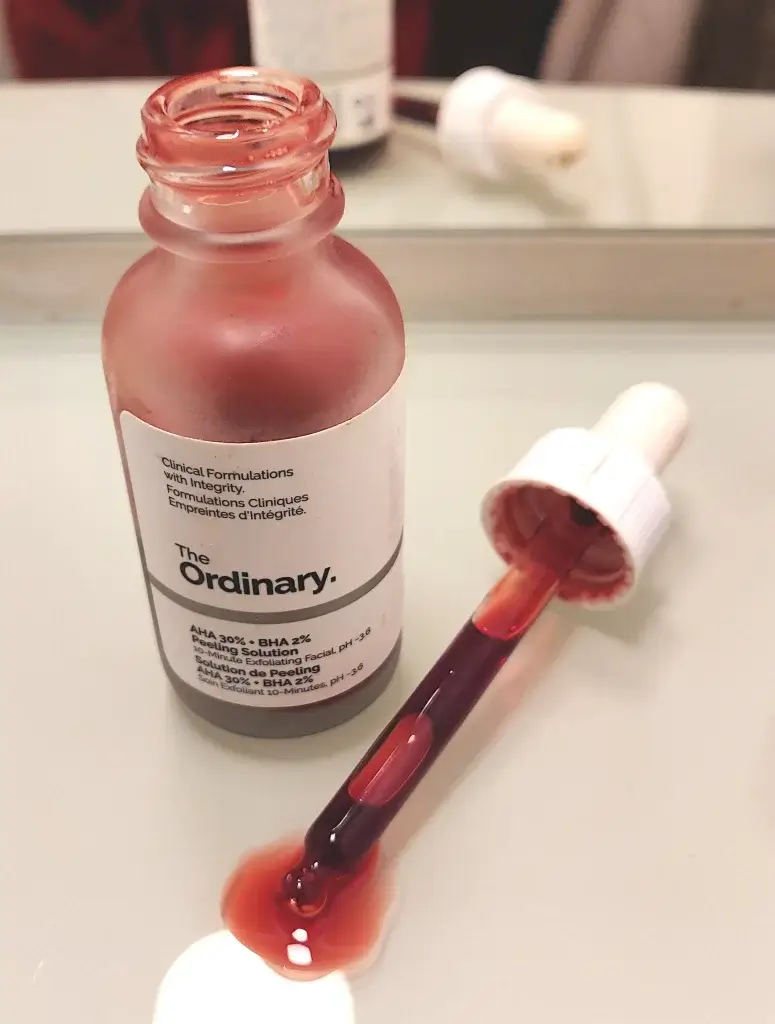
Extras by Skin Type: What to Try and How to Build It Into Your Facial Care Routine
If you think your face needs something extra, here are a few more steps and how they are slotted between cleansing and moisturizing.
- Exfoliant: Apply chemical and enzyme exfoliants to dry skin directly after cleansing. Scrubs (also called mechanical or physical exfoliants) should be applied to wet skin after cleansing. But be very gentle; they can be a culprit of broken capillaries.
- Masks: Apply to dry skin after cleansing and exfoliating (if applicable).
- Serum: Apply directly before moisturizing and after toning (if applicable).
The following are products to try according to skin type. All are safe to use with facial hair.
For the scalp, which can be sensitive, I’d only use a scrub.
Oily or Acne-Prone Skin
- Exfoliant: A salicylic acid cleanser (a beta-hydroxy acid, or BHA) works pore-deep to reduce oil buildup and prevent breakouts.
- Serum: Niacinamide is your all-rounder here—it helps regulate oil production and calms inflammation without drying you out.
- Mask: A clay mask, like kaolin or bentonite, draws out excess oil and keeps skin feeling balanced. I break this down further in my post on clay masks.
Dry or Mature Skin
- Exfoliant: Lactic acid (an alpha-hydroxy acid, or AHA) gently smooths the skin’s surface while preserving moisture.
- Serum: Hyaluronic acid delivers deep hydration and helps plump fine lines.
- Mask: A rich cream mask with squalene or ceramides offers nourishing support for the skin barrier.
Normal Skin
- Exfoliant: Fruit enzyme exfoliants—like papaya or pumpkin—gently refresh without irritating.
- Serum: Vitamin C brightens your tone and helps prevent age spots with consistent use.
- Mask: A hydrating clay mask with added ingredients like aloe or glycerin keeps your skin balanced.
Combination Skin
- Exfoliant: Glycolic acid (AHA) evens texture, especially on oilier areas.
- Serum: Niacinamide with zinc helps reduce oil in the T-zone and soothes dryness elsewhere.
- Mask: Multi-masking may do the trick—apply clay where you’re oily and a hydrating mask on drier patches.
Sensitive Skin
- Exfoliant: A pumpkin enzyme mask or polyhydroxy acid (PHA) toner offers ultra-gentle exfoliation without causing irritation.
- Serum: Look for calming ingredients like Centella asiatica or azelaic acid to reduce redness and support healing.
- Mask: A fragrance-free gel mask with aloe or oat extract helps soothe and replenish.
If you were to build all of these into your facial care routine, the order would look like this: cleanse → exfoliate → mask → tone (if using) → serum → moisturize.
Eye Creams
And a final extra: eye creams. I’m not a great fan of these; basically, they don’t seem to do any more for me than the moisturizer I apply to the rest of my face. Nevertheless, they could be useful if you’re prone to puffiness or dark circles. Try a cream with ingredients like caffeine (for puffiness) or peptides (for firmness).
For extreme dryness, you’d be better off with a hydrating serum (hyaluronic acid, glycerin, or panthenol) sealed in with your usual moisturizer. Another option is slugging, to which I’ve dedicated an entire post.
Where From Here?
You don’t have to renew all your personal care items at once. Take it one step at a time, gradually replacing what you already have.
Soon, you’ll start to notice improvements—and maybe even begin fine-tuning with a serum or exfoliant once or twice a week.
I think what keeps me going on this journey is the quiet confidence a relaxed and healthy face gives me. I wouldn’t want to be without it.
© 2025 J. Richardson
Related Posts
Disclaimer
The information provided by The Neat and Tidy Man (“we,” “us,” or “our”) on theneatandtidyman.com (the “site”) is for general informational purposes only. While we endeavor to keep the information up to date and correct, we make no representation or warranty of any kind, express or implied, regarding the completeness, accuracy, reliability, suitability, adequacy, validity, or availability of any information on the site. Under no circumstance shall we have any liability to you for any loss or damage of any kind incurred as a result of the use of the site or reliance on any information provided on the site. Your use of the site and your reliance on any information on the site is solely at your own risk.

